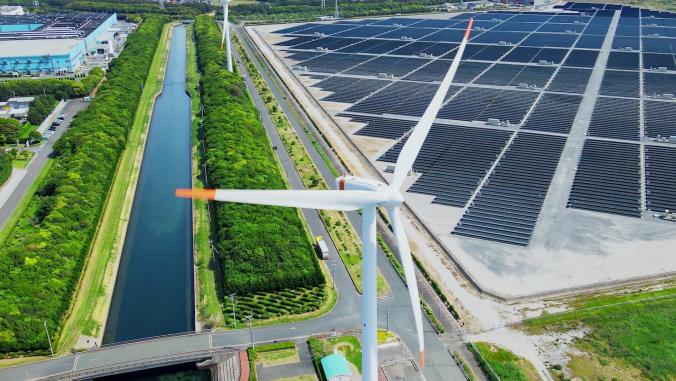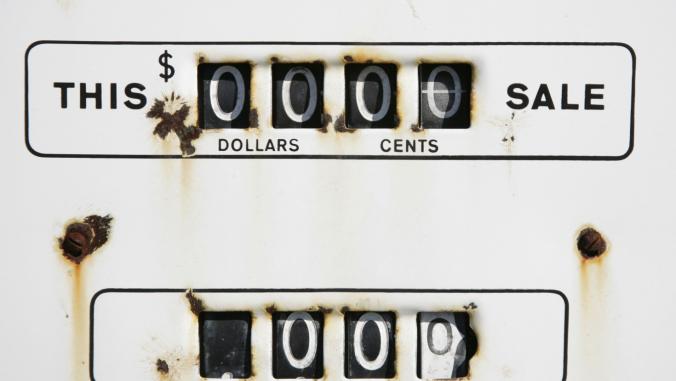Setting ambitious net-zero targets for company's core business is one thing, but achieving deep decarbonization across the entire supply chain is quite another.
After all, company supply chains often can be complex webs stretching right across the globe, making them particularly hard to keep track of, let alone to measure and mandate emissions reductions from. Yet without action to get to net-zero emissions across every corner of the global economy, the planet's climate will continue to warm.
But fresh research last week from the World Economic Forum (WEF) and Boston Consulting Group (BCG) argues that, as well as being a "game changer" in the fight against climate change, decarbonizing supply chains is possible with readily available technologies and at surprisingly low cost.
The report analyzes the top eight industries with the most carbon-intensive global supply chains, which it estimates together account for more than half of the world's total greenhouse gas emissions. Food is the most carbon-intensive industry, accounting for around 25 percent of global CO2, followed by construction at 10 percent, it estimates. Meanwhile, fashion, freight and household consumer goods each account for 5 percent of total emissions, and electronics, professional services and automotive each contribute 2 percent.
Yet despite these vast and deeply varied supply chains stretching right around the world, the report argues achieving end-to-end decarbonization for these massive industries would add as little as between 1 and 4 percent to end-consumer costs in the medium term. In fact, 40 percent of all emissions could be eliminated with measures that yield savings, or come at abatement costs below $12.10 per metric ton of CO2, it argues.
Increasing process efficiency and the use of recycled materials, as well as buying more renewable power, provides companies with major climate gains at very low costs.
That is because many key levers needed to reduce emissions across these industries can be easily deployed today and cost very little to implement, according to the report. And, with small and medium-sized enterprises making up 90 percent of the world's businesses, large companies have significant potential to drive decarbonization across borders worldwide by exercising their purchasing power.
Moreover, Patrick Herhold, one of the report's co-authors and managing director and partner at BCG's Center for Climate Action, suggested taking action to decarbonize supply chains was increasingly becoming a sound business decision.
"The argument that costs are a major barrier to reducing emissions is increasingly flawed — around 40 percent of the emissions across the eight major supply chains we analyzed can be eliminated with measures that bring cost savings or are at costs of less than [$12.10] per ton of CO2 equivalent," he explained. "Increasing process efficiency and the use of recycled materials, as well as buying more renewable power, provides companies with major climate gains at very low costs."
As more companies, investors and organizations have announced net-zero targets the past couple of years, it has led to a hierarchy of sorts between decarbonization methodologies and levels of ambition. Those companies with independently verified, science-based targets covering supply chains — also known as Scope 3 emissions — are widely regarded as the most credible, as they take a more holistic — and arguably more accurate — approach to shrinking a company's climate impact.
That doesn't make tackling supply chain emissions easy, of course. Even the most ambitious and conscientious companies can struggle to glean the data required to set clear emissions targets for their suppliers, and engaging with a sometimes vast ecosystem of firms can be a huge administrative and logistical exercise.
But the report argues that many technologies and methods needed to achieve deep supply chain decarbonization are readily available. For example, mandating switching to renewable heat and power, as well as investing in measures to boost energy efficiency, are among the most obvious first steps to take, and often can save money for suppliers, the report notes. Other effective policy levers highlighted by the report include measures to boost the circularity of products and recycling to cut down on waste and materials, as well as switching to electrical processes wherever possible. And nature-based solutions and sustainable agricultural practices that reduce fertilizer use and boost biodiversity and forest cover also can play a significant role in helping to sequester carbon, while bolstering climate resilience and typically improving yields.
Many of these efforts can significantly slash emissions at relatively little cost, while also holding potential for companies driving these efforts through their supply chain to make a dent in the carbon impact of countries that tend to have less ambitious environmental targets than industrialized nations, the report notes.
For heavier industry and manufacturing the challenge is certainly higher, requiring investment in carbon capture and storage (CCS) technologies, green hydrogen production and renewable forms of high temperature heat to produce steel, cement and chemicals, for example. Costs are likely to come down for many of these technologies in the coming years, but the report notes that "it is prudent to assume they will remain comparatively expensive."
However, such costs are often overestimated. Investing in emerging green manufacturing systems would not necessarily have a huge knock-on impact on consumer prices, according to the report. At the high end, it estimates the average cost of a car priced at $36,400 could go up by $607 due to investments in producing greener steel, while a $180,000 home might cost $6,071 more to secure zero carbon status. Similarly, producing a zero carbon pair of jeans or a basket of groceries might add just $1.21 onto the price tag, according to the report.
Supply chain decarbonization presents a giant and as-yet untapped opportunity for international climate action.
Moreover, with consumers becoming increasingly eco-conscious in their buying habits, and companies facing reputational risk from not taking transparent action to combat their planetary impacts, as well as the prospect of rising carbon prices in many jurisdictions, the cost of not investing in carbon mitigation measures is also rising rapidly. The report points to a number of survey-based studies in recent years which indicate more than half of consumers — particularly in richer countries — are willing to pay more for sustainable products, and the segment is growing fast. Indeed, demand for sustainably marketed products grew around seven times faster than demand for their conventionally marketed counterparts over the past five years, according to an NYU study last year.
As such, the report urges companies to ramp up efforts to decarbonize their supply chains, both for the sake of the planet but also in order to guard against risks to the future of their own business. It also sets out a series of recommendations for curbing supply chain emissions, starting with advice on building a robust view of supplier emissions data, setting ambitious CO2 targets, and then redesigning products, services and sourcing strategies to drive down emissions. Internally, too, staff should be incentivized in their decision making to prioritize decarbonization, the report adds, while externally companies are advised to share best practices and work together to create demand signals for green products. Companies might also consider co-funding most costly emissions abatement measures alongside their suppliers or others in their industry, it suggests.
"Supply chain decarbonization presents a giant and as-yet untapped opportunity for international climate action," the report concludes. "And it does all this with very limited cost impacts on final products. In most industries, economics are not a meaningful barrier to moving to net zero supply chain emissions."
Every company, and every sector, will have a different web of suppliers and partners leading to a different pathway to achieving net-zero across their Scope 3 emissions. But as more large companies use their considerable lobbying clout and purchasing power in response to consumer and investor demand, costs for mitigation measures are likely to come down further and the pressure on any remaining carbon-intensive laggards will only increase.






